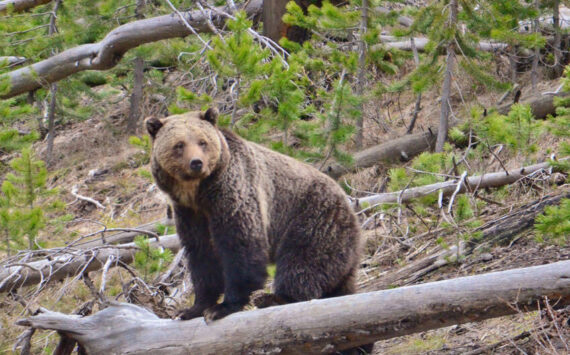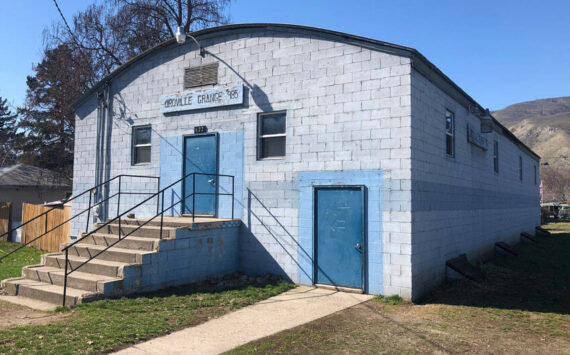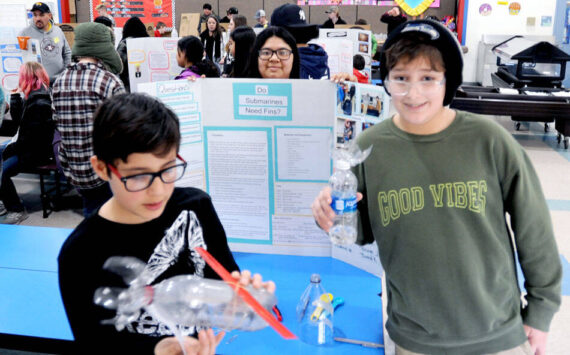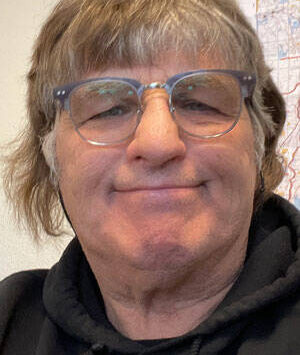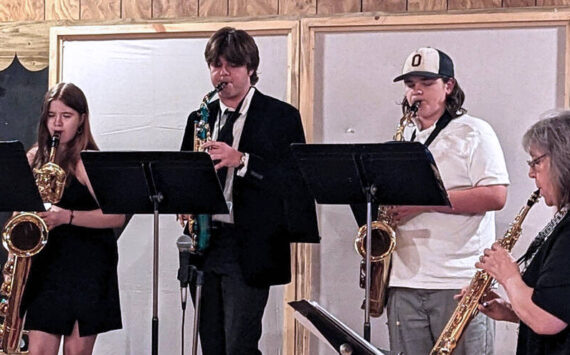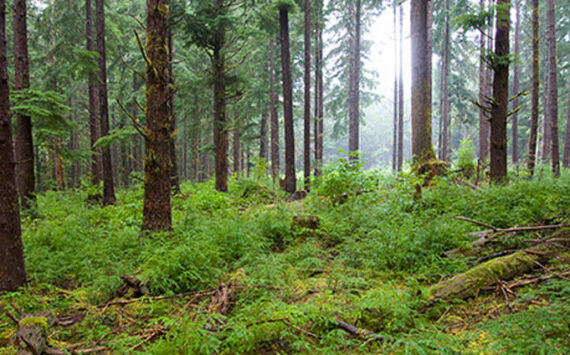Chamber presentation focuses on tourism development
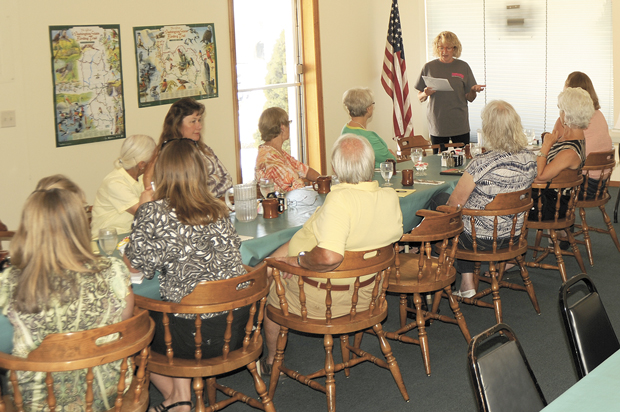

OROVILLE – Oroville as a Unique Travel Destination was the topic of conversation in a presentation by Sandy Lorentzen at the Oroville Chamber of Commerce’s Thursday, July 11 meeting.
Lorentzen lives in Seattle has been marketing the Pastime Bar & Grill for her friends Vickie and Brant Henzie, but describes herself as an outsider who is a “509er at heart.” She said she has fallen in love with the Oroville area.
“To be successful we don’t need to move diners from one restaurant to another, but be a catalyst for increasing the size of the diner pool and this means drawing more people to Oroville to eat and spend.”
Lorentzen has been involved in tourism development in various capacities over the years, including helping to build international audiences for the Pacific Northwest Wagner Festival in Seattle and the Brighton Festival in England. Currently she is the website content editor for a South and Central American tour operator. She has spoken to many travel associations and written about making communities unique as travel destinations.
“I hope you will take my remarks as they are intended, to stimulate a conversation about a common vision for making tourism a greater asset to Oroville as a generator of tax revenues, employment and economic development,” she said.
She added that she wanted to start talking about the community’s assets to attract more tourists and about what makes people travel and what makes the media talk up a place.
She spoke about why people travel – the need to experience something special and how things like convention centers are not the boon that people once thought they would be.
“It’s the vacationers who spends the most because that’s all he/she has to do with time spent at the destination,” she said. “For communities that are unlikely to ever be in the game of vying for conventions, they must look to the vacationer for their tourism dollars anyway, which is what makes image so important. The great thing about image is it’s something you create.”
About events: “There are events and there are events. Events that people can see at home or that happen in a number of different places close to home will be less appealing in motivating a person to travel than a unique events,” she said. “Some of the most successful festivals attract a specialized audience. You either like chamber music or you don’t.”
The most beneficial events are ones that give visitors reasons to stop and stay, turning day trips into hotel nights, according to Lorentzen.
She gave several examples of events that started small and have grown into big events, like the Shakespeare Festival in Ashland, Ore. that started in 1935 as part of their Fourth of July celebration. Today it attracts 125,000 visitors a year, has an annual budget of $75 million and a total estimated economic impact of $168 million.
She also points to Seattle’s Wagner Festival. “You don’t have to love high German opera. You just have to love money, because not only were big spenders coming to the event, but the event was generating a lot of press,” Lorentzen said.
She says festival events that happen in the evening, or are multi-day events, are important because at least some segment of the audience doesn’t go home at night.
She said she was excited about the Tumbleweed Film Festival and thinks it has a good chance of growing into something big for Oroville and the surrounding communities. She described how the Toronto International Film Festival and the Banff Mountain Film Festival have grown into big successes.
“I would sell our Okanogan counterparts this way: Like Tumbleweed, the Napa Valley International Film Festival takes place in non-traditional venues and is intertwined with its wine and food industries,” she said. “Like Tumbleweed, it started in 2010. Its first year consisted of three evenings showing six films. Today, 125 wineries and 30 restaurants participate and over 100 films are shown in 11 venues spread among four towns. I think is potential the Canadian Okanagan travel industry will like.
“The most successful high-profile film festivals are treated like tourism assets and supported as such by their communities. Those that struggle along unaided by the beneficiary business and local economic development agencies meet a common end.”
Lorentzen said the festival’s founders have big ambitions and hope to build the event to an international stature that attracts nationwide audiences as well as establishing a filmmaking summer camp in Oroville for kids.
“How many of Oroville’s festivals hold regular events in Seattle to promote traveling to Oroville?” she asked. “Tumbleweed hosts several promotional film screenings a year in Seattle for that purpose.”
She also said going after the “foodies” can be profitable.
Food and drink events make people travel and attract a high value, low impact guest.
She describes these guests as “Affluent adults who can afford and appreciate fine wine, world-class cuisine, great natural beauty and who respect community values that have served to make the Napa Valley ‘legendary.'”
She also points to the Gilroy Garlic Festival, saying that it has grown into the “garlic capital of the world,” processing more garlic than anywhere else. However they feature only a couple types of garlic, while the Okanogan grows the most commercial varieties in the world.
“The Okanogan is the Napa Valley of garlic,” she said. “If ever there was a place that should have a huge, tourist attracting, media-generating garlic festival, it’s here. We have one in Tonasket and I applaud them for it, but its economic impact could be much, much greater.
“Maybe they would like to expand their concept geographically to include Oroville or brainstorm how to attract more tourists, but if not, there are other ways for Oroville to attract foodies,” she said.
Then there are the birders, the bicyclists, the motorcyclists and outdoor adventure enthusiasts.
“You’ve already got what they want. It’s just a matter of convincing them to come here instead of going somewhere else. For the most part, like the foodies, these people are urban too and they have discretionary income for experiences,” she said.
Lorentzen said after several months of analyzing the subject of attracting more tourists to Oroville, she has concluded Oroville is located in the wrong place – on the edge of the Cascade Loop Route but not in it, too far west and north of the Coulee Corridor and barely included in the Cascade Foothills Farmland Association’s map and cut off entirely on their website.
“Oroville needs to move to the middle,” she said, adding that Arnie Marchand had pointed out Oroville really is in the middle – between Wenatchee and the northern end of the Canadian Okanagan.
“You can get anywhere east, west, south or north in the Okanagan/Okanogan from Oroville. We know we’re in the middle, but everyone else thinks we’re on the edge. I think we can change that,” she said, diagramming an oval on a map with Oroville at its center.
She also presented a chart that showed how many more wineries, golf courses, ski areas, wine festivals restaurants, cideries and distilleries there were when Oroville is at the center. The chart showed the number of such businesses located in Oroville, often with a zero, but how they increased when you added the Canadian Okanagan and how they increased even more by adding in the American Okanogan.
A second chart showed the distances from Vancouver to Osoyoos and from Seattle to Oroville, within about 25 miles of being equidistant.
“If Vancouver is a big market for Osoyoos, Seattle should be a big market for us,” she said, suggesting the two Okanogans work together.
She points to the efforts of the Thompson Okanogan Tourism Council to develop a ten-year plan to turn the area into as big an economic generator in the shoulder and winter months as it is in the summer.
The major focus of this effort is to promote the uniqueness and build the reputation of its natural attractions and events. One example is they plan to inventory and promote the regions agricultural products that fit into the slow food movement. All the sub-units of the Thompson Okanogan region are working at this same goal, according to Lorentzen.
“We want Canadians. Thompson Okanogan wants Americans. Unlike some communities, we also want Americans to travel to Canada if they have to pass through Oroville to get there. The Okanogan/Okanagan is a win win,” she said.
When she began her hour-long talk, Lorentzen said she wanted to head up the chamber’s “Wacky Ideas Committee.”
“That’s where I’d like to serve because daydreaming is a good thing in tourism development,” she said. “Dreams put people in motion and most ideas, until proven, seem farfetched – like landing a man on the moon.”
She concluded by saying tourism development is not rocket science and that unique events and attractions make people travel…commonplace attractions and events don’t.
“It always takes time and small successes building on one another to get a community to embrace common vision for tourism development. I think we can do it.”
